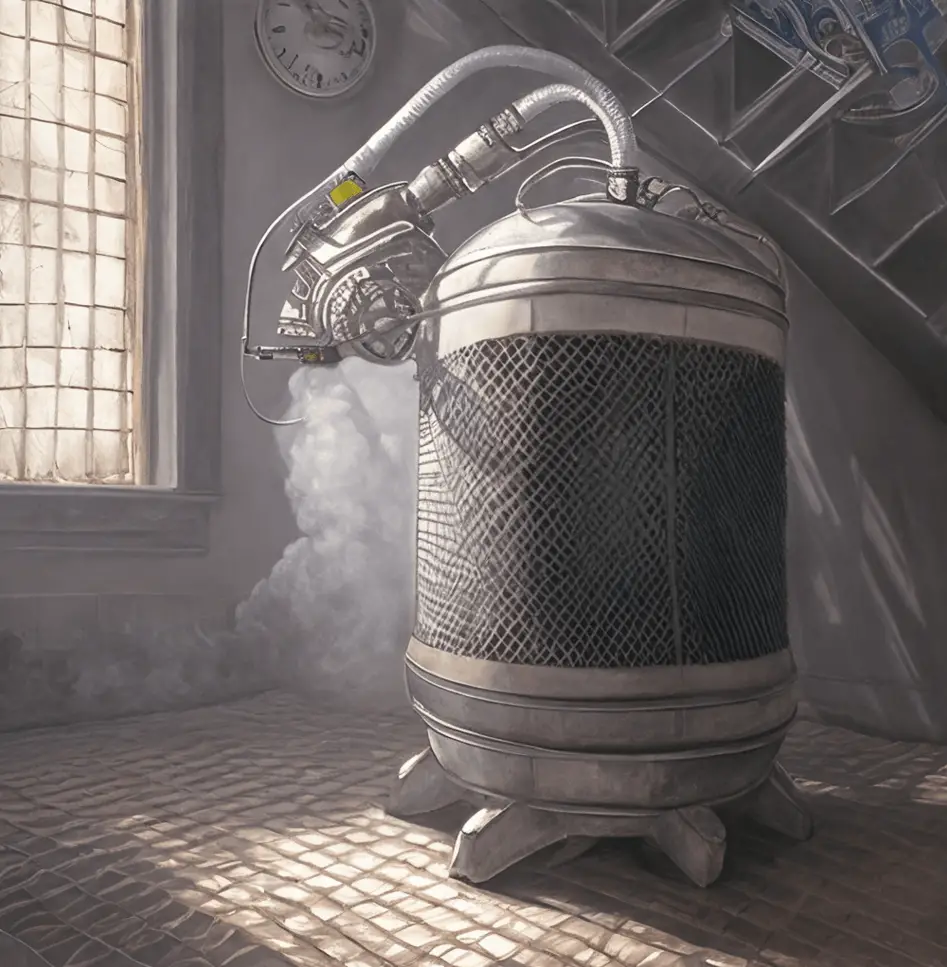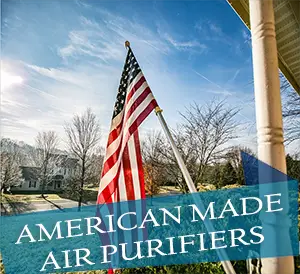
A silent guardian, a steadfast protector, the best air purifier for asbestos is not just a device; it’s a testament to your unwavering commitment to health and safety in your living space. With the imminent danger of asbestos looming over many households, it’s crucial to arm yourself with the right defense – the ultimate air purifier.
The Hidden Dangers of Asbestos
Asbestos – a naturally occurring group of silicate minerals renowned for their fire-resistant properties and strength. For these reasons, they were once widely used in the construction industry. However, when disturbed, these fibrous materials can become airborne and, when inhaled, can lead to serious health problems, including lung cancer and mesothelioma. Therefore, understanding and combating the dangers of asbestos with an effective air purifier is of paramount importance.
Identifying the Best Air Purifier for Asbestos
In your pursuit of the ultimate asbestos combating device, consider these crucial factors:
- Filter type: Opt for HEPA filters, the gold standard capable of trapping particles as minuscule as 0.3 microns.
- Size and capacity: Choose a device that can efficiently purify the air in your intended room size.
- Noise level: If silence is golden to you, consider devices with quieter operation, especially for bedroom use.
- Energy efficiency: Find a device that balances power and energy conservation.
Now, let’s unveil the top contenders available on Amazon that garner my highest recommendation.
Top 3 Best Air Purifiers for Asbestos
| Product | HEPA Filter | Coverage Area | Noise Level | Energy Efficiency |
|---|---|---|---|---|
| Alen BreatheSmart 45i | Yes | Up to 800 sq.ft | Whisper-quiet operation | Energy Star Certified |
| Medify MA-40 | Yes | Up to 840 sq.ft | 3 fan speeds | Energy Star Certified |
| RabbitAir MinusA2 | Yes | Up to 700 sq.ft | Ultra quiet | Energy Star Certified |
Each of these powerful devices not only impresses with its specs but also boasts stellar reviews.

The Alen BreatheSmart 45i stands out with customizable filters, allowing users to target specific pollutants effectively.

The Medify MA-40 brings a potent combination of affordability and power, featuring a medical-grade H13 filter that surpasses the standard HEPA filter in trapping tiny particles.

Finally, the RabbitAir MinusA2 captivates with advanced BioGS HEPA technology, which doesn’t just capture, but also reduces the growth of bacteria and viruses on the filter.
The Lasting Impact of a Good Air Purifier
Investing in the best air purifier for asbestos is an investment in long-term health. The benefits extend beyond immediate relief from allergic reactions or respiratory discomfort; an exceptional air purifier can mitigate the risk of severe health issues in the future. This closely aligns with the insights we gleaned in our previous exploration of the “best air purifier for mycotoxins”. Like mycotoxins, asbestos fibers are microscopic, and their threat extends beyond immediate physical discomfort. It’s about securing a healthier future for yourself and your loved ones.
Frequently Asked Questions
What is the best air filter for asbestos?
For the menacing presence of asbestos, a HEPA (High-Efficiency Particulate Air) filter is your best defense. This filter is engineered to remove minuscule particles as small as 0.3 microns, making it a perfect choice for trapping and removing asbestos particles.
How many microns is asbestos dust?
Asbestos fibers, alarmingly tiny, often range from 0.7 to 90 microns in length. For context, a human hair’s diameter is about 50-70 microns, making asbestos particles significantly smaller. This microscopic size necessitates the use of special filters, like HEPA filters.
What size filter for asbestos?
To combat asbestos, a HEPA filter that can catch particles as small as 0.3 microns is advisable. This ensures that the majority of asbestos fibers, often smaller than 1 micron in diameter, are efficiently trapped.
Can asbestos be removed from the lungs?
Once inhaled, asbestos fibers can become entrenched in lung tissue, causing inflammation and scarring over time. While treatments can manage symptoms and slow disease progression, no method can completely remove these fibers from the lungs.
The Real-Life Importance of Air Purifiers: A Story of Asbestos Danger
A few years ago, in a quiet, close-knit neighborhood where everyone knew everyone else, lived an old retired gentleman, Mr. James, affectionately known by the locals as “Old Jimmy.” Jimmy was a kind soul, always ready with a helping hand or a comforting word. He lived alone in a charming, decades-old house built during a time when asbestos was widely used in construction.
One day, Jimmy started having a persistent cough. It wasn’t just the regular cold; it was a cough that kept him up at night, causing shortness of breath and a discomfort that couldn’t be ignored. The local physician, puzzled by his symptoms, advised him to seek a more comprehensive medical examination in the city.
Upon reaching the city hospital, a barrage of tests was performed. After a grueling wait, the results were out. Jimmy had asbestosis. The doctor explained that prolonged exposure to asbestos particles had caused the illness, which had now led to a significant decrease in his lung function. The news hit Jimmy and his neighborhood hard.
As word spread, a cloud of fear and uncertainty descended upon the neighborhood. Many of the homes there were built in the same era as Jimmy’s house, meaning they likely had asbestos lurking within their walls, roofs, and basements too. The neighborhood was in a state of shock; something had to be done.
I happened to have family living in the same neighborhood. Seeing the distress caused by the incident and being well-versed in the dangers of indoor air pollutants, I decided it was time to educate and help my community.
At the next neighborhood meeting, I took the floor to discuss the hidden threat within our homes: asbestos. The mention of the word caused a ripple of unease. I told them about Jimmy’s case and explained how decades-old homes were often insulated with asbestos-laden material. And while undisturbed, asbestos doesn’t pose a threat, any disturbance could cause the fibers to become airborne and inhalable. Once inhaled, these fibers could lodge in the lungs, leading to asbestosis, and in severe cases, even lung cancer or mesothelioma.
As I explained these details, I could see the concern on everyone’s faces. But it wasn’t my intention to instill fear; it was to empower them with knowledge and a solution. This was when I introduced the concept of air purifiers for asbestos.
I explained how air purifiers, especially those equipped with HEPA filters, could capture and remove microscopic particles like asbestos fibers from the air. They could drastically reduce the risk of inhaling these fibers, ensuring the air within our homes was safe to breathe. They were an effective solution in our fight against asbestos exposure.
Days turned into weeks, and slowly, every home in the neighborhood began adopting air purifiers. The community came together, sharing resources, aiding those who needed financial help, all with a single goal—healthier, cleaner air. The change was gradual. But with time, people reported experiencing fewer respiratory issues, better overall health, and importantly, peace of mind.
Jimmy, too, found comfort in his air purifier. While it couldn’t reverse his condition, it helped prevent further exposure and gave him the assurance of cleaner air. His courage and the neighborhood’s unity in face of adversity left an indelible mark on everyone’s heart.
Through Jimmy’s story, I understood how crucial it is to spread awareness about indoor air pollutants and the tools we can employ to combat them. If an entire neighborhood could take up arms against asbestos with something as simple yet effective as an air purifier, why couldn’t we all?
This story is why I believe every home needs the best air purifier for asbestos. It’s not just about clean air; it’s about protecting our health, our families, and our communities.
In this guide, I have aimed to equip you with the knowledge you need to navigate the complex world of air purifiers, particularly when it comes to protecting against asbestos. Remember, when it comes to your health and well-being, it pays to invest in the best air purifier for asbestos.
I hope this article has provided you with valuable insights. Remember, it’s our collective responsibility to protect ourselves and those around us from the dangers of asbestos, and investing in an air purifier is a proactive step toward achieving this goal.
Conclusion: Why the Best Air Purifier for Asbestos is a Must-Have
Understanding the best air purifier for asbestos is not a simple task, but it’s an essential one. Especially if you live in an older home or in an area prone to air pollution, having a good air purifier is a step towards a safer and healthier environment.
Choosing the best air purifier for asbestos is more than just a purchase—it’s an investment. It’s an investment in cleaner, fresher air; in comfort and peace of mind; in health and longevity.
As we continue our exploration into the world of air purifiers, building on previous insights from articles like best air purifier for mycotoxins, we hope to provide you with the tools and knowledge to create a healthier, safer living environment. So, stay tuned for more!




